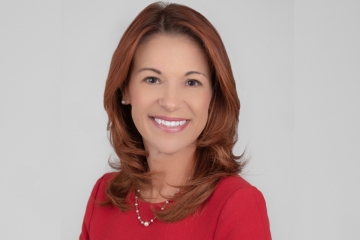
Replacing the Carnegie Unit will spark a battle royale
One of the most important efforts in American education today is the project to displace the Carnegie Unit as the fundamental unit of measurement in high schools.

One of the most important efforts in American education today is the project to displace the Carnegie Unit as the fundamental unit of measurement in high schools.








One of the most important efforts in American education today is the project to displace the Carnegie Unit as the fundamental unit of measurement in high schools. The scant coverage of this initiative—and the limited number of players involved—implies that many see this as just a technocratic reform, one that merely seeks to replace “credit hours” with mastery-based approaches to learning. Don’t be mistaken: If it gets traction, this move is likely to spark a battle royale that will make the Common Core wars look like child’s play.
It’s certainly possible that the end result could be a much-improved system—and a better, stronger high school experience for students. It has huge potential upsides for high-achieving students especially, if they are allowed to test out of general course requirements and spend more of their time on interesting and in-depth AP, IB, or dual-enrollment material (or heck, even get more sleep!). Same with CTE students, if this frees up time for apprenticeships and the like.
But between here and there are multiple pitfalls. That’s not just because the heart of a Carnegie-free system will be a lot more high-stakes testing, though that’s surely part of it. Assessments are how we would measure student mastery, which helps explain why ETS (né the Educational Testing Service) is a key partner in the effort (along with the Carnegie Foundation—yes, the progenitor of the Carnegie Unit more than a century ago—and Laurene Powell Jobs’s XQ Institute).
More fundamentally, it’s because this initiative will require policymakers to confront fundamental questions that tend to divide the education field and the country. Among them:
I’m not the only one asking questions like these. Over on his Education Week blog, Rick Hess and Jay Mehta recently dug into this issue, too. Rick explained the basic argument for ditching the Carnegie Unit:
The ruthless attachment to measuring hours of instruction has reified “seat time” as the all-purpose measure of high school instruction. In The Great School Rethink, I note that eminent historians David Tyack and Larry Cuban famously observed that the Carnegie Unit has “frozen schedules, separated knowledge into discrete boxes, and created an accounting mentality better suited to a bank than to a school.” In an era of digital tools and evolving school models, this arrangement has become increasingly onerous, getting in the way of mastery-based learning, nontraditional career and technical education, online learning, and more.
But he also summarized the risks:
This year marked the fortieth anniversary of “A Nation at Risk,” which famously urged states to boost the number of Carnegie Units required for graduation. Given that many of those excited about ditching Carnegie sit in the same offices as those who, a generation ago, led the push to act on that report’s recommendation, it’s worth asking why savvy leaders once deemed mandating more math, science, English, and world-language requirements a promising path forward. The answer, of course, is that they thought it a crude but workable way to put a floor beneath student learning. In a time of sky-high graduation rates, rampant grade inflation, and plummeting student achievement, this is something that we shouldn’t lightly dismiss.
(An excellent New America white paper on high school course requirements, by Rafael Heller, recaps this history.)
Yet, as Jal wrote, moving away from those course requirements is one of the major goals of this effort:
The bigger problem is less that a course equals a certain number of hours and more that you have to take three to four courses of math, science, English, and history/social studies to graduate from high school. There are so many worthwhile things to study in the world: Why do we require physics and not astronomy? Why history and not economics? Why can you study science and history but not the history of science? And why not more applied courses that connect the subjects to the world, that take place off campus as well as on?
These are good questions—but imagine what will happen when we open this Pandora’s Box. Are we really going to ditch the mandate that, say, all students study American history? What about civics? Coding? Foreign languages? Health? Financial literacy? The reason that state standards, textbooks, and student schedules are stuffed to the brim is that every identity group pushes hard for their stories and histories to be represented, and every interest group pushes to use America’s curriculum to address their societal concerns. Moving to a competency-based approach won’t change that. Everyone will just fight over what’s on the competency-based assessments and/or which assessments students must pass in order to graduate.
Or picture states abandoning the standard model of four years of English, three years of math, and so forth. Equity advocates will scream that low-income students and students of color will be discouraged from taking college-prep courses (or modules or whatever we end up calling them) by schools that don’t think they can handle them.
The Carnegie Foundation and its partners at ETS can’t address these weighty questions on their own. Indeed, what we probably need is (brace yourself) a Common Core–style initiative led by state policymakers with the authority to make these decisions, perhaps including governors, legislators, state superintendents, and state board members, with lots of input from parents, students, educators, business leaders, and higher education.
And then we’d need to charge this commission with coming up with a reasonable set of competencies for students to master (in my view, with multiple diplomas in mind). Otherwise the inclination will be to create a wish list (“wouldn’t it be wonderful if every student was able to do these 1,001 things...”) that will be unworkable, and be little improvement over the straitjacket we find ourselves in today. Perhaps they could use a “zero-based budgeting” approach to developing the list of graduation requirements, one in which every single requirement needs to have a strong case behind it.
—
There’s little doubt that the typical American high school is still “frozen,” to use Tyack and Cuban’s word. Students trudge through seven blocks, forty-five minutes each, five days a week, forty weeks a year, with teachers doing their best to engage kids in material that most of them find boring and pointless. It’s a colossal waste of time and human potential.
The Carnegie Unit is part of what’s keeping us from moving to something better. But to succeed, we can’t just focus on “disrupting” the current system. We need to be clear-eyed about what it will take to build something sturdy in its place. And we need a smart strategy for managing the politics that will accompany the effort to get there.

The claims from the field of education technology—“ed tech” to insiders—could hardly be more grandiose. In 2013, columnist Thomas Friedman said that “nothing has the potential to lift more people out of poverty” than massive open online courses (MOOCs). Mark Zuckerberg has suggested that his computer-based learning program would launch mediocre students into the 98th percentile through personalized learning. Today, as generative AI programs are leaving us gob smacked with their creative capabilities, Khan Academy’s Sal Khan says that chatbots will soon provide “a personal AI tutor for every student.”
So far, none of this has come to pass. And a new article by Matt Barnum at Chalkbeat dissecting the disappointing results of Summit Learning, an online personalized learning platform developed by Zuckerberg’s philanthropic venture, ought to give ed tech believers pause. After titanic investments in this software, the best evidence of effectiveness that Summit’s promoters can summon is that some schools have had good experiences with it and surveys have shown that school leaders view it favorably.
The article points to the scale of the ed tech letdown: The Chan-Zuckerberg Initiative (CZI) has poured more than a hundred million dollars into Summit Learning, which is meant to leverage technology to individualize a student’s education, offering them personalized assignments, faster feedback, and access to features such as digital planners. Now, not only is there no evidence of the revolutionary effects of the program Zuckerberg suggested, but there are apparently no rigorous studies even showing modest effects on outcomes like student numeracy and literacy. Barnum notes that fewer schools are using the program now than used it just a few years ago.
Yet education technologies like Summit have not just failed to live up to their hype, they’ve often changed very little about schools at all. Arguably, the greatest impact on learning from ed tech in recent years has been to offer low-quality computer-based courses that allow failing students to “recover credit,” a development that seems to have more often led to scandals and lowered standards than to any improved learning.
Sometimes, it seems like those who design and promote these new technologies have not considered for even a moment how or why students would choose to use them. From the decline of the MOOC to the lackluster effects of personalized learning, what ed tech disappointments have in common is that their successes were premised on the idea that all students were missing was the right “education delivery mechanism.” In this “delivery model,” education is thought of as a good to be distributed rather than something each student must earn for herself, and it is pervasive. Yet schools cannot “deliver” algebra to a student any more than Jenny Craig can deliver six-pack abs to a customer. The obstacle to learning is often not a lack of resources but a lack of uptake on the part of the students.
Yet educationists perennially ignore student agency and effort. When considered from the student’s point of view, it is easy to see that many education technologies will indeed be a boon to learning, but the largest gains will go to students who are motivated to use them. To get them motivated, they need strong intrinsic drives, peers who push them to work harder, a family that incentivizes academic performance, an inspiring teacher, or some shorter-term stakes to their academic effort. The lattermost is a practical mechanism that education policy can craft, yet it is too rarely discussed within the field.
In 2023, as generative AI is on the rise, we are beginning to hear a new round of ed tech hype. John Bailey argues in Education Next that, in contrast to earlier waves of technology that ultimately disappointed, this time is different (emphasis mine):
While past technologies have not lived up to hyped expectations, AI is not merely a continuation of the past; it is a leap into a new era of machine intelligence that we are only beginning to grasp. While the immediate implementation of these systems is imperfect, the swift pace of improvement holds promising prospects. The responsibility rests with human intervention—with educators, policymakers, and parents to incorporate this technology thoughtfully in a manner that optimally benefits teachers and learners.
Bailey gets this mostly right—and generative AI truly is a startlingly powerful emerging technology—but the ultimate responsibility for learning resides with the learners themselves. Otherwise, those students will do what they have done with every other technology that has made its way to their screen: use it to have fun instead of doing the hard work of challenging and investing in themselves. If we want students to learn more, those educators, policymakers, and parents that Bailey mentions need to be laser-focused on why students should choose to spend their time studying when many more entertaining options are available to them. And that’s true whether the ed tech in question is a genius chatbot or simply a public library.

Microschools exist as a midpoint between homeschooling and traditional schools. Typically, the entire school will only have twenty-five students and one or two teachers—often parents, sometimes former educators looking for a more personal classroom, and occasionally local community members like doctors who have expertise to share.
During the pandemic, learning pods developed in an ad hoc manner—parents pooling their time and resources to monitor online learning, find supplemental material, and fill in as instructors. Similarly, co-ops are an assemblage of homeschooling parents who come together to share their expertise and provide socialization for their children. Microschools are more formal affairs with budgets, paid staff, often (though not always) accreditation, and umbrella networks.
I attended a conference on microschools recently at Harvard’s Kennedy School and found much to love about them. One microschool founder spoke about the ease of taking ten kids on regular field trips and the gas station attendant who handed out Slurpees to this little troop of children every time they were on the way back from a local monument or museum. It’s the kind of little platoon upon which a healthy society functions.
Another attendee runs a learning lab that provides space and educational services for homeschooling parents who need a classroom space or tutor. This type of institution is typically called a partnership microschool, an organization that can collaborate with homeschoolers to buttress their work with space, instructional expertise, and curriculum. It’s the kind of institution that will foster a robust school choice landscape—not just choices between this or that charter school, but more expansive options.
Unfortunately, the movement faces many challenges. Antiquated policies block their expansion. Logistical hurdles stymie newcomers. And a commitment to dubious education theories threatens their success.
First, the policies. Bathrooms were a frequent topic of conversation at this conference, and by that I don’t mean inquiries about where to find the loo at the Kennedy School. Rather, regulations about bathrooms in schools were a pain for many of these microschool founders. To start a school with fewer than twenty kids, many states required that these entrepreneurs have three bathrooms in their building—one for boys, one for girls, and one for adults. Fire codes posed similar difficulties. Does grandma’s house really need sprinklers if a homeschooling co-op works there twice a week?
The regulations and laws that govern traditional schools simply don’t fit the microschooling format. Does a parent, who happens to be a pharmacist, need a license to teach chemistry twice a week? Can running a community garden fulfill the credit hours of a typical ecology course?
In many regards, they need deregulation, but that’s not to entirely dismiss the need for safeguards. Should they have to demonstrate that their students achieve basic competency in reading and writing? Should their staff require background checks lest they turn out to be predators or thieves? How does a chemistry class handle potentially dangerous chemicals?
There are also logistical hurdles to starting a microschool. In one panel, Matthew Kramer, the co-founder of Wildflower, a network of over sixty Montessori-based microschools, acknowledged such difficulties. How do you fund it? How do you find a building? What materials do you use? How do kids get sports or clubs? Isn’t it lonely teaching all by yourself? Who teaches advanced math when your expertise is twentieth century history?
For all its faults, the much-derided public-school bureaucracy has utility. Yes, it slows needed reforms. Yes, it treats everyone the same. Yes, it’s a fiscal drag. But the bureaucracy at my public school system also meant that I walked into my classroom with a course syllabus outlined for me and recommendations for lesson plans, a lifesaver especially in my early years. I didn’t have to bother filling out tax forms or jumping through regulatory hoops because we had HR managers and lawyers to handle that stuff.
Unfortunately, hurdles will likely always exist to the scalability of microschooling. Lots of people want to become teachers; far fewer want the headache of founding a school. As the movement grows, however, systems such as Wildflower will develop to accomplish some of the bureaucratic functions that a district does, and other organizations will pop up to provide teacher training or facilitate the founding process.
But that’s only half the story. Another challenge to microschooling is far more noxious: an ideological undercurrent that left me unsettled by the end of the conference.
In a compelling piece a few months ago in these pages, veteran homeschooling mom Larissa Phillips details the movement’s infatuation with unschooling, a theory of education (if we could call it that) that postulates that, if we just let kids be, they’ll follow their own passions to success. She details parents arguing about whether kids should be expected to follow basic rules, attend classes that they don’t like, or bother getting out of bed if they didn’t feel like it that day.
Scroll through stories of model microschools on the National Microschooling Center’s website, and you’ll see a commitment to similar ideologies. Inquiry learning, project-based learning, self-directed learning, and other models of a similar stripe abound. The center’s founder argues that this preference for self-direction is inherent in the model’s rejection of systematization. In an interview with the New York Times, Jerry Mintz, the founder of Alternative Education Resource Organization, an institution that supports microschools and independent schools, shares a similar sentiment: “Kids are natural learners and the job of the educator is to help kids find resources; they are more guides than teachers.”
Color me skeptical.
There’s little evidence that this build-your-own-adventure approach to education actually works. There are a few capacities, such as spoken language, that evolution has primed us to learn naturally and seemingly without effort, but everything else requires structure and effort. What’s more, I don’t much care if a kid inherently wants to learn his phonics and math facts or read Shakespeare or the Declaration of Independence. Some of the most important things we do require external compulsion. How many kids declare their opposition to summer camp only to discover they never want to leave?
At some point, Johnny can only learn so much from a nature walk and needs to sit down and read a science textbook. Children need explanation, direction, and structured practice. That being said, maybe the small scale of microschools will allow educational models such as project-based or inquiry learning to succeed, where they failed in large classrooms, but I doubt it.
My colleague Mike Petrilli believes that these “hybrid homeschools” will likely remain a niche phenomenon. Perhaps they will. But 5.4 percent of 73.1 million children is still a lot of children, and trends suggest an even larger share of the population will begin to homeschool in the coming years. To ensure that those children receive the education they deserve, it will require policymakers to craft smart laws to govern these new institutions and the movement itself to interrogate its own beliefs and practices, experimenting with new educational practices, yes, but willing to alter course if they’re proving unsuccessful.

On this week’s Education Gadfly Show podcast, Kirsten Baesler, the superintendent of North Dakota, joins Mike to discuss her state’s new teacher and principal apprenticeship programs. Then, on the Research Minute, Amber reports on a study that examines the accuracy and efficacy of school rating systems.
Recommended content:
Feedback Welcome: Have ideas for improving our podcast? Send them to Daniel Buck at [email protected].

The ongoing debate over when students should begin taking Algebra I is rooted in efforts to reduce inequities in access to higher STEM courses in high school. California, worried about marginalized students disproportionately being enrolled in lower-level math courses, required its districts to shift away from placing high-achieving students on advanced math pathways by implementing “Algebra for All” in the late 1990s.
In practice, however, “Algebra for All” yielded poor results. Perhaps most concerning, rather than providing new opportunities for students who would have been placed into lower pathways, taking Algebra in eighth grade was “unambiguously harmful” for the lowest performers—who often needed to repeat the course.
San Francisco’s solution? No Algebra for any student until ninth grade. Rolled out in 2015 with the state’s new math standards, policymakers claimed that the more rigorous middle school math framework would better prepare students for long-term success in mathematics. Though the reform removed Algebra as an option for eighth graders regardless of their math ability, students could accelerate to an advanced math pathway in later years by taking a new “compression” course, which combined Algebra II and Pre-Calculus or taking Geometry the summer after ninth grade.
A recent study explores how the controversial reform changed high school math course-taking patterns, student performance, and how the results varied by race. Using longitudinal data from over 23,000 students, researchers analyzed math course enrollment and credits earned across six cohorts that spanned the implementation of the new Algebra policy.
As expected, course-taking patterns changed significantly for the class of 2019, the first affected by the reform. Ninth grade enrollment in Geometry fell 45 percentage points from 52 to 7 percent, and Algebra enrollment increased by 53 percentage points. By tenth grade, Algebra II enrollment had fallen from 38 percent to 5 percent—while Geometry enrollment rose 40 percent. In the 2019 cohort’s junior year, Precalculus enrollment fell from 41 to 16 percent, but 20 percent of students signed up for the new “compression” course. Regardless, AP Calculus enrollment fell by 6 percentage points for seniors between the 2018 and 2019 cohorts.
Although subsequent cohorts made better use of their acceleration options (e.g., taking Geometry over the summer), enrollment in advanced math courses still remained lower than before the reform.
One of the primary goals of the policy was to narrow racial gaps in advanced math course-taking, but post-reform racial gaps remained largely the same. White and Asian enrollment in Precalculus was still over twice that of their Black and Hispanic counterparts, Calculus enrollment for Black and Hispanic students remained below 10 percent both before and after the reform, and the proportion of students who chose not to enroll in any math course in their senior year remained virtually unchanged.
Contrary to the policy’s intention, the number of students who received credit in an advanced math course did not change, either. Pre-calculus, Probability & Statistics, AP Statistics, and AP Calculus credit attainment were unaffected.
This study provides important evidence that delaying Algebra had a null impact on the advanced course-taking and credit attainment of marginalized students, contrary to what has been reported.
Furthermore, additional analyses and anecdotal reports provide evidence that the reform is exacerbating inequalities—as families with resources now enroll their students in more expensive tutoring, summer courses, and private schools to accelerate their child’s learning.
Any way you slice it, the reform effort failed to meet its goals. Rather than opening opportunities to all students, delaying Algebra until ninth grade limited opportunities for advanced math coursework. By mistaking equity for mediocrity, San Francisco Unified School District has disrupted its students’ math education with nothing to show for it.
SOURCE: Elizabeth Huffaker, Sarah Novicoff, and Thomas Dee, “Ahead of the Game? Course-Taking Patterns under a Math Pathways Reform,” Annenberg Institute at Brown University (2023).

Quantifying learning loss experienced by students whose schools closed for extended periods during the coronavirus pandemic is vital. Figuring out the mechanisms by which the losses happened, in contrast, is more of a forensic exercise. Schools have generally been open for more than a full school year now. At least two classes of seniors have graduated, many of their peers seem to have given up, and those remaining are experiencing whatever version of remediation is available to them. Whatever happened is already done, and time has marched relentlessly on. Nevertheless, setting the record straight on the means by which school closures impacted student learning must be part of our reckoning with the pandemic responses chosen and our planning for the future.
Harry Patrinos, an education economist and adviser with the World Bank, offers us a new working paper that extends an ongoing series of World Bank Group research attempting to identify the mechanisms of learning loss for primary and secondary school students all around the world. He specifies that this publication is a “work in progress,” but its findings form part of the full, grim picture we will eventually have.
Data come from numerous studies of pandemic-era impacts in more than four dozen countries. Many findings were already published earlier this year, and the new work adds additional countries and data. Patrinos looks at eleven factors potentially increasing or mitigating learning loss, which is defined using test score data via country-specific instruments that were standardized for comparison. Some of the factors are obvious—pre-existing school quality, school closure duration, private school enrollment, and internet availability and access—while others such as trade union strength and “measure of democracy” seem somewhat tangential. Control data include Covid-19 death rates per 100,000 population, a lockdown stringency index, vaccination rates, and national income. The working paper notes that not all available data are nationally representative. While learning loss in the United States is representative of all students, school closure duration varied state to state and is reported as a national average. Nepal’s data, as another example, come from a study that only includes adolescent girls from one disadvantaged district, but is compared directly to countries with much more robust datasets.
First and foremost: There is a clear link between school closure duration and learning loss. Closures as part of government-imposed lockdowns averaged twenty-one weeks’ duration and resulted in an average learning loss of 0.23 standard deviations across the countries studied (representing two-thirds of the world’s population). Testing for mitigating factors or other means to explain learning loss produced no significant findings, meaning that school closures appear to be directly responsible for student learning loss.
Patrinos notes that the American Academy of Pediatrics released the first school guidance for safe in-person learning in the United States on June 24, 2020, and the European Centre for Disease Prevention and Control released its recommendation on August 6. “By the time of the 2020–21 school year,” he writes, “it had become clear that it was possible to safely open schools.” However, many schools around the world remained closed for many more months. Sometimes that was due to longer (or recurrent) lockdown requirements, but data show that other factors were associated with non-mandated closures. Higher-income countries had shorter durations of school closures, while a low vaccination rate was associated with longer school closures. Higher test scores before Covid-19 were associated with longer school closures—perhaps an indication, Patrinos suggests, of hope for resilience of students or a belief in whatever remote learning was in place—as was a higher proportion of private schools in a country. Interestingly, the death rate does not correlate with school closure, suggesting that closure decisions were based on many factors other than actual Covid fatalities.
Whatever the reason for extended closures, Patrinos finds that each additional week of school closure increased learning loss by a further 1 percent of a standard deviation. In short: The longer schools stayed closed, the less students learned, no matter what else was done to blunt the losses.
Despite the huge trove of data we now have available, more will come. Researchers will continue to enlarge and sharpen the picture, but it seems pretty clear already. “The main lesson learned,” Patrinos concludes, is that “if a similar situation arises, keeping schools open should be a priority, as the evidence shows that the health benefits of school closures seemed to have been lower than the cost of learning losses.” Sobering thoughts for some unwanted “next time,” hollow validation for everyone who believed that reopening schools quickly was the best move, and a steep climb ahead for those trying to undo the damage already wrought.
SOURCE: Harry Anthony Patrinos, “The Longer Students Were Out of School, the Less They Learned,” World Bank Group Working Paper (April 2023).

Cheers
Jeers
